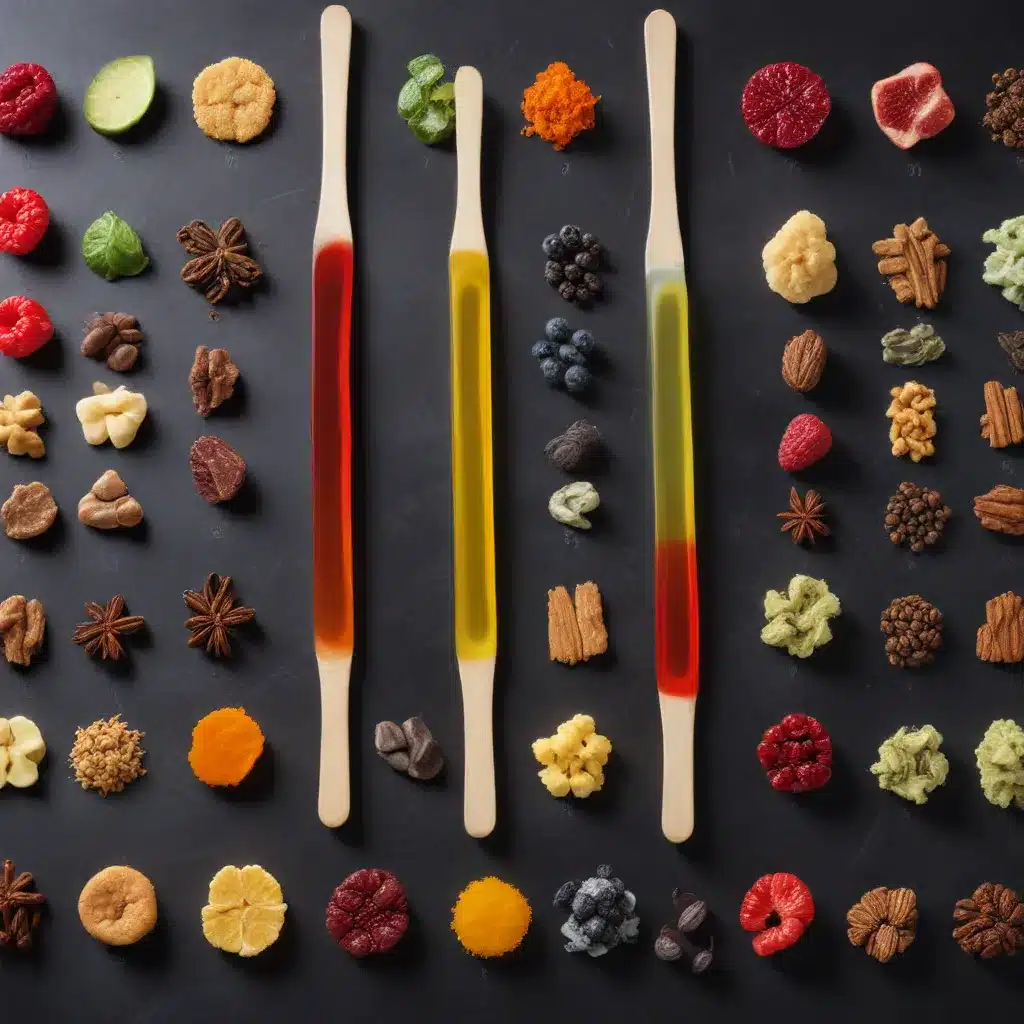
The Fundamentals of Flavor Pairing
In the culinary world, the art of flavor pairing is a captivating and almost mystical aspect that can elevate a dish from ordinary to extraordinary. This symphony of tastes and aromas is orchestrated to create harmonious and memorable dining experiences. As a seasoned culinary professional, I invite you to embark on a journey that delves deep into the science and creativity behind flavor pairing.
To truly understand the art of flavor pairing, we must first grasp the science that underpins it. Flavor pairing is not just about randomly combining ingredients; it’s about exploiting the complex interactions between different compounds that create flavors. Imagine a vast wheel with hundreds of spokes, each representing a distinct flavor – this is the flavor wheel, a tool that categorizes flavors into primary, secondary, and tertiary categories.
The Flavor Wheel: A Roadmap for Chefs
The primary flavors include sweet, sour, salty, and bitter, while the secondary flavors encompass umami, fatty, and astringent notes. Tertiary flavors delve even deeper, encompassing specific aromatic compounds found in various ingredients. Understanding this flavor wheel helps chefs identify complementary flavors and build balanced profiles.
For example, pairing a salty ingredient like prosciutto with sweet melon exploits the contrast between saltiness and sweetness for a delightful taste experience. This is the essence of flavor pairing – leveraging the interactions between different compounds to create harmonious and balanced dishes.
Flavor Compounds: The Building Blocks of Taste
Flavor compounds are the fundamental building blocks of taste and aroma. These compounds are responsible for the diverse spectrum of flavors we encounter in food. Understanding which compounds are shared between ingredients is key to successful flavor pairing.
A well-known example of shared aroma compounds is the presence of vanillin in both vanilla beans and oak barrels used for aging wine. Vanillin is a key aroma compound responsible for the sweet and creamy notes in vanilla. When wines are aged in oak barrels, they can acquire subtle vanilla and spice undertones from the wood, creating a harmonious and recognizable flavor pairing in wines, especially in the case of oak-aged Chardonnay or red Bordeaux wines.
This shared compound, vanillin, illustrates how we can derive the same aroma compound from different sources (vanilla beans and oak barrels) and contribute to the complexity and appeal of various culinary creations, enhancing both desserts and wines.
Contrasting and Harmonizing Flavors
Flavor pairing often revolves around the concept of contrast and harmony. Some pairings work because they contrast flavors, creating excitement and intrigue. Others harmonize, creating a seamless and balanced taste experience.
Consider the classic contrast between sweet and sour in dishes like sweet and sour chicken. The sweetness of the sauce contrasts with the tanginess of vinegar, resulting in a harmonious yet exciting combination. On the other hand, a harmonious pairing might involve complementary flavors that meld together seamlessly. Think of the classic combination of tomatoes and basil in a Caprese salad. The earthy, herbaceous notes of basil harmonize beautifully with the juicy sweetness of ripe tomatoes.
The Rise of Umami
The fifth taste, umami, has gained prominence in recent years. Umami is often described as a savory or meaty taste, and it can be used to elevate a wide range of dishes. Ingredients that are rich in umami—mushrooms, soy sauce, and Parmesan cheese, for example—can enhance and deepen the overall flavor of a dish.
One popular example of umami-rich flavor pairing is the combination of Parmesan cheese with ripe tomatoes. The umami in the cheese amplifies the tomato’s natural sweetness and creates a more complex and satisfying flavor profile.
Classic Flavor Pairings and Modern Techniques
While classic pairings are timeless, modern culinary innovation has taken flavor pairing to new heights. Let’s explore some cutting-edge techniques and trends that are pushing the boundaries of flavor exploration.
Molecular Gastronomy: Transforming Flavors
This avant-garde approach to cooking employs scientific principles to create unexpected flavor combinations. Techniques like spherification and foaming can transform ordinary ingredients into extraordinary culinary creations. For instance, the technique of spherification involves transforming liquid ingredients into tiny, flavorful spheres with a thin membrane. These spheres can burst with flavor in your mouth, creating a unique and memorable dining experience. Imagine a burst of basil-infused olive oil encapsulated in a delicate sphere served alongside a tomato salad.
Fusion Cuisine: Blending Cultures and Flavors
As our world becomes more connected, so do our culinary influences. Chefs are exploring fusion cuisine, merging ingredients and techniques from different cultures to create exciting and unexpected flavor pairings. For example, Korean tacos combine the bold flavors of Korean barbecue with the convenience of a taco, resulting in a fusion dish that offers a delightful balance of sweet, spicy, and savory elements.
Mastering the Art of Flavor Pairing
Exploring the science behind flavor pairing and experimenting with both classic and modern techniques can unlock a world of culinary magic. By understanding the fundamental principles of flavor interactions and embracing the creative potential of unexpected pairings, chefs and home cooks alike can elevate their dishes to new heights.
Remember, the kitchen is a canvas for culinary exploration. Embrace the flavor wheel as a guide, delve into the fascinating world of flavor compounds, and don’t be afraid to contrast and harmonize flavors in new and innovative ways. The possibilities are endless, and the rewards are truly delicious.
To jumpstart your flavor pairing journey, be sure to visit https://kitchenwarrior.co.uk/ for more inspiring recipes, cooking tips, and culinary insights. Unlock the secrets of the kitchen and unleash your inner flavor alchemist!


